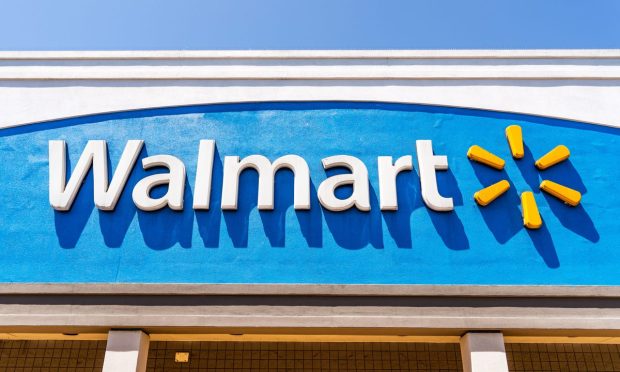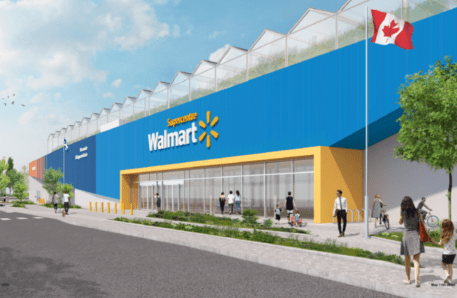AMZN vs WMT Weekly: For Retail Giants, Q2 Is All About the New

Depending on your perspective, today is either April Fool’s Day or the start of the 2nd quarter.
Whichever way your pleasure tends, there’s no dispute that the change of the calendar marks a seasonal shift to Spring and all the fetes, fashion and fun that go with it.
With that in mind, what better way for the top two retailers to embrace la Primavera than to plant a bunch of seeds that will (hopefully) bear fruit in the fall.
To that point, both Amazon and Walmart entered April with a string of newly announced ventures and initiatives, all of which were well outside their core retail wheelhouse, yet still clearly aimed at doing their part to feed the greater funnel.
From new devices to new stores to new promos to an entirely new division, April is here, and business is blooming.
Hello, Glow
For the second time in as many weeks, Amazon has done a major device drop on the market by announcing the launch of its new interactive video and gaming console Glow, a $300 device that Amazon said “connects kids with remote loved ones like never before.”
“We know a majority of parents say it’s challenging for their kids to stay engaged on traditional video calls,” said Amazon Glow General Manager Joerg Tewes in a multimedia press release that also included a 90-second demonstration video.
In likening Glow’s projection screen/gaming board to a “giant virtual recreation room bursting with fun,” Tewes said the device’s 8-inch video screen, 19-inch projection image and specially designed sensing technologies were built to remove the feeling of physical distance an create an immersive experience instead.
Glow is the latest entrant in the growing ecosystem of Amazon devices, and its U.S. launch comes just one week after the $1.6 trillion Seattle-based tech firm initiated an effort to get customers to use Alexa devices in their whole house as a safety measure in case of an emergency.
Un Accent sur la Durabilité
For you non-French speakers, “un accent sur la durabilité” is how Walmart Canada describes the new state-of-the-art store it will open next year in Montreal, the country’s second-largest city.
Said another way, the 140,000 square foot Super Center will have a “special focus on sustainability,” including an environmentally friendly green roof made of glass, as well as at least 8 other eco-minded features such as natural refrigerant, LED lighting, ultra-low flow lavatories, and building materials with some recycled content in them.
 “Montreal is an extremely important market for us, and we’re incredibly excited to be growing in Quebec and offering even more shopping options for our customers,” Cyrille Ballereau, Walmart Canada regional VP for Quebec, said in a press statement, adding that the retailer was “always listening to our customers.”
“Montreal is an extremely important market for us, and we’re incredibly excited to be growing in Quebec and offering even more shopping options for our customers,” Cyrille Ballereau, Walmart Canada regional VP for Quebec, said in a press statement, adding that the retailer was “always listening to our customers.”
The template for the Walmart store of the future also includes EV vehicle charging stations and specially configured space to accommodate curbside pickup. It also come in the wake of back-to-back “Net-zero” store announcements from Amazon and Target two weeks ago.
As it stands, Walmart has 71 stores in Quebec. The company said its new design is indicative of its commitment to the Canadian market as well as reaching long term sustainability goals.
“This major investment in a new store is a critical part of Walmart’s plans to better serve Montrealers,” the company statement said, noting that it is just one of the ways the retailer is investing for growth. “Walmart believes there is a bright future for the retailer in Quebec.”
Cheap Gas Here
If there’s one thing everyone can agree on at the moment, it would have to be that gasoline prices are too high. Not only are they taking a noticeable bite out of household budgets, but they’re also putting a crimp in business financials too.
In the case of Amazon, the company said it spends “hundreds of millions of dollars in fuel cards and benefits” each year supporting the delivery partners within its vast and critical transportation network, much of which is privately owned and operated.
With that in mind, and in the wake of similar moves by other rivals vying to attract and retain increasingly scarce final mile delivery workers, Amazon announced Wednesday (March 30) that is doubling the fuel rebates it offers to drivers in its Flex program.
Specifically, the company said it would double the cashback it pays on fuel purchases, up to 12%, for drivers that purchase gas with the Amazon Flex Rewards Debit Card.
Using the latest AAA national average price of regular gasoline that stands at $4.21 per gallon, a 12% or 50-cent per gallon kick-back would drop the price to $3.71. However, in California, where the average price stands at $5.88 per gallon, the same double-discount would drop the price by approximately 70 cents to $5.17 per gallon.
In its statement, Amazon said it was continuing to closely monitor the situation to determine if it needs to make future adjustments.
Hi Marge!
The mass retail industry, and groceries in particular, are notoriously thin margin businesses, meaning if everything goes pretty much as planned, the gap between costs and sales is typically in the low single digits.
It’s a way of life and a competitive reality that players in the space have not only come to accept but point to as the reason they need to operate at such a scale.
With that in mind, it is worth noting that Walmart’s new and rapidly expanding foray into advertising is being touted as a “higher margin initiative” than its core retail operations.
In the process of ramping up — and talking up — its new Walmart Connect ad platform this week, which has rocketed to being a $2 billion revenue generator in under a year, the company said it was pleased with the early results and was taking steps to grow its new cash cow into a top-10 player.
For its part, Walmart sees itself in a unique position to connect its customers and suppliers in ways that benefit both, and itself, along the way.
“Every year, 90% of American households rely on Walmart for a range of products from must-buy brands, both large and small,” Rich Lehrfeld, senior vice president and general manager of Walmart Connect, wrote in a blog post. “And every week, more than 150 million customers shop with us in-store or online.”
While most of us would love to be sitting atop a $2 billion dollar business, keep in mind that in 2021, Walmart did $573 billion in sales, which would make its ad business — high margin or not — worth about three-tenths of one percent of total revenue, or literally, a drop in the ocean.
